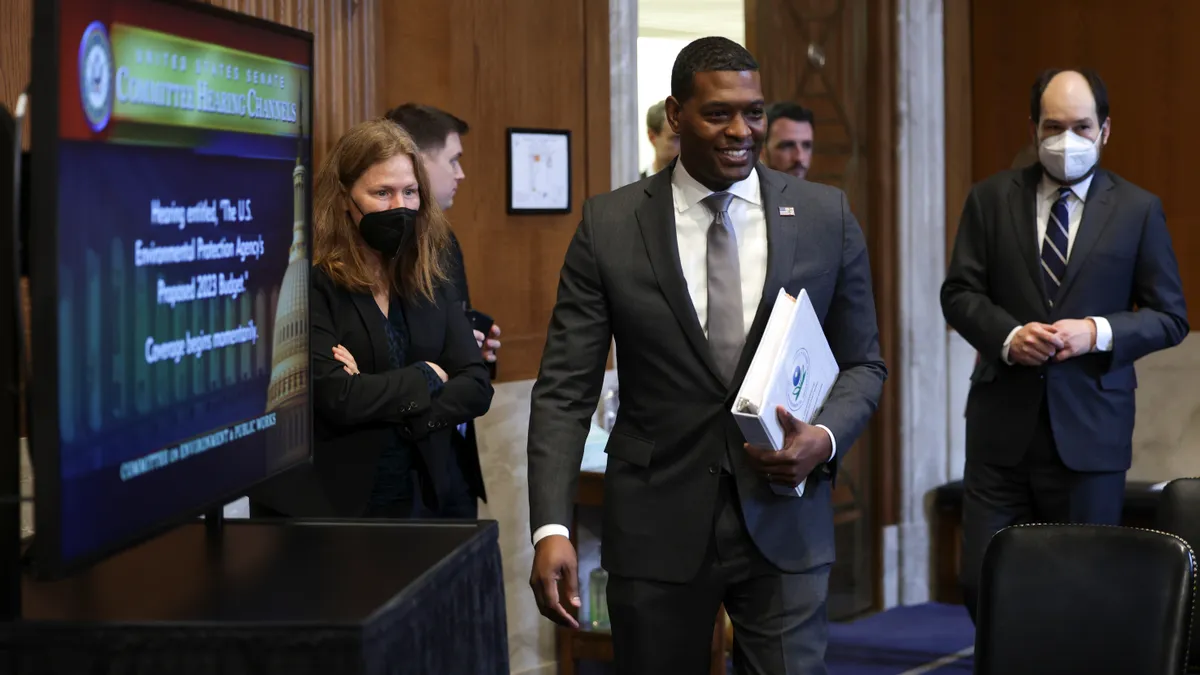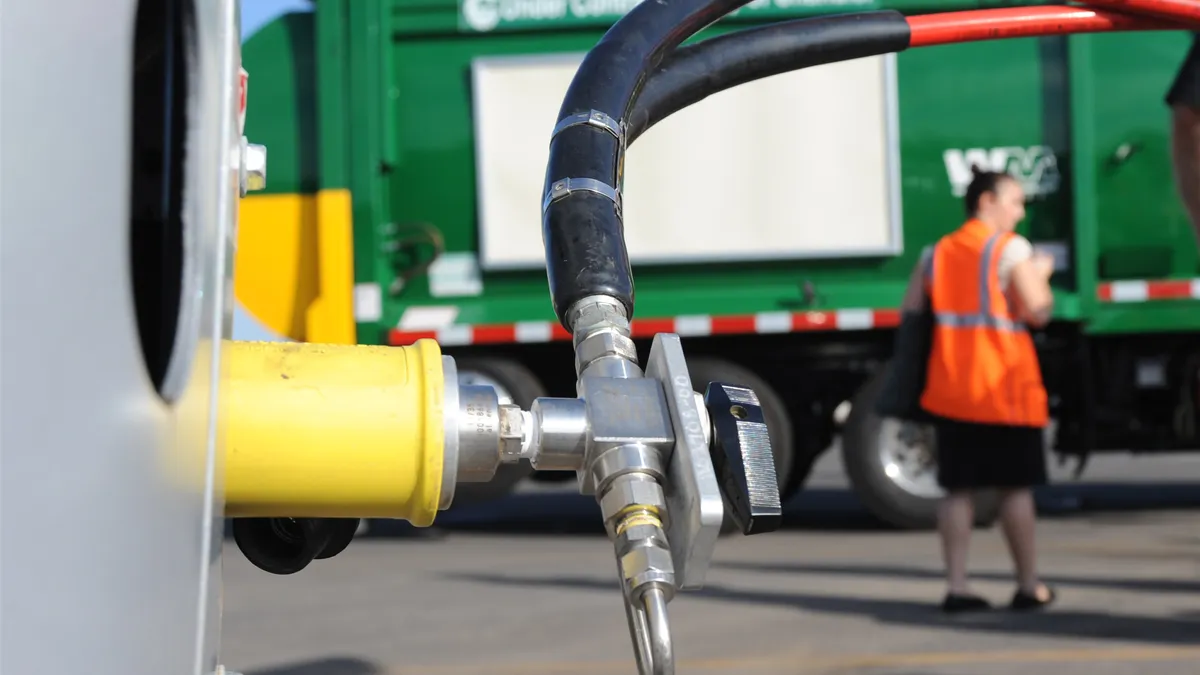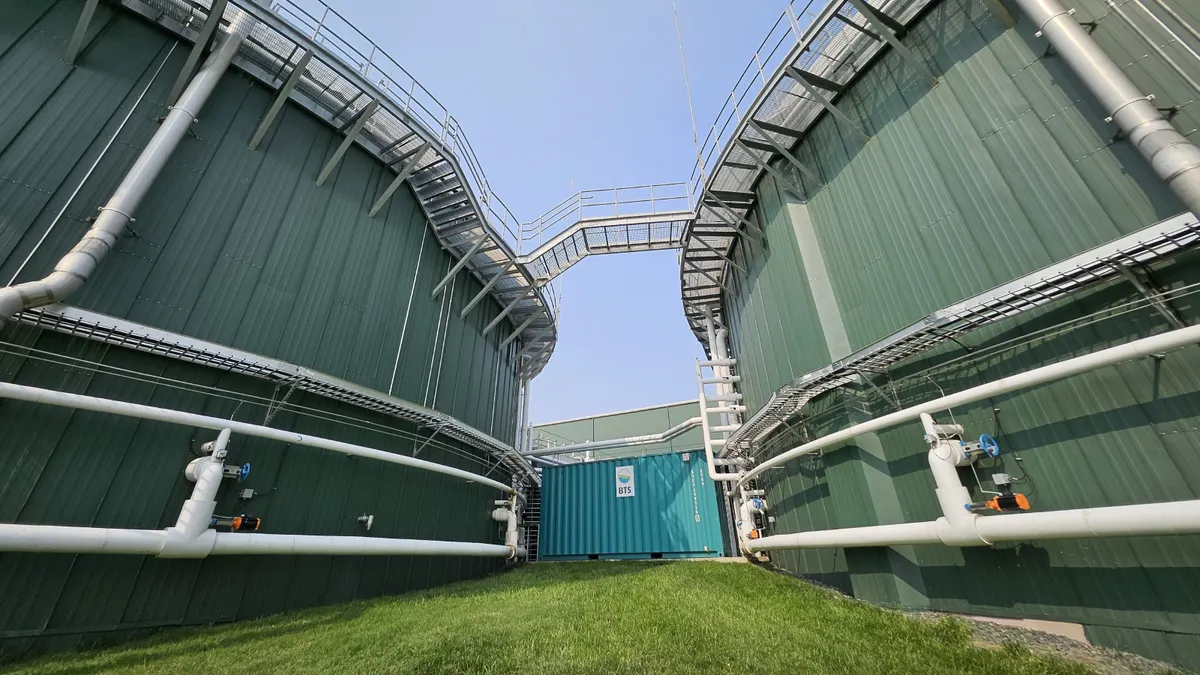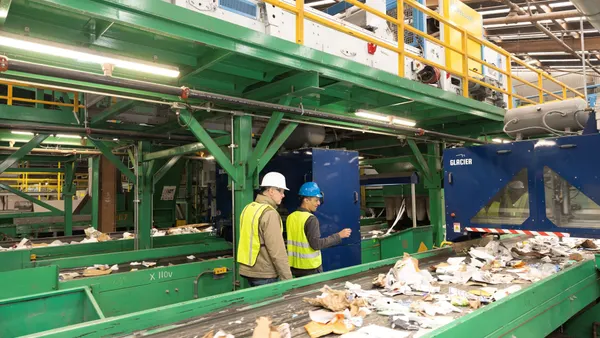The U.S. EPA’s plans to designate two “forever chemicals” as hazardous under the Comprehensive Environmental Response, Compensation and Liability Act has elicited concern from groups representing the waste and recycling industry.
On Friday, the agency released preliminary plans to designate perfluorooctanoic acid (PFOA) and perfluorooctanesulfonic acid (PFOS), including their salts and structural isomers, as hazardous under the Superfund law. If these plans are finalized through the federal rulemaking process, any releases of the two chemicals that meet or exceed a certain threshold would have to be reported and certain sites with those releases could potentially be placed on the agency’s Superfund National Priorities List. In some cases, the EPA could also seek to recover cleanup costs from potentially responsible parties.
“Communities have suffered far too long from exposure to these forever chemicals. The action announced today will improve transparency and advance EPA’s aggressive efforts to confront this pollution, as outlined in the Agency’s PFAS Strategic Roadmap,” said EPA Administrator Michael Regan in a Friday statement. “Under this proposed rule, EPA will both help protect communities from PFAS pollution and seek to hold polluters accountable for their actions.”
According to the agency, exposure to these chemicals “may lead to cancer, reproductive, developmental, cardiovascular, liver, and immunological effects” and many known sources of contamination are “near communities already overburdened with pollution.”
While the EPA’s announcement was hailed by advocacy organizations such as the Environmental Working Group and Earthjustice, operators of solid waste facilities are concerned with how this will play out in practice. Various forms of PFAS have been present in the waste stream for decades — given their prevalence in nonstick products, firefighting foam and other categories — and addressing that contamination can be costly because treatment and destruction technology is still evolving.
“SWANA is very concerned that EPA designating PFAS compounds as hazardous substances under Superfund will have substantial impacts on landfills,” said David Biderman, CEO of the Solid Waste Association of North America, in a statement. “It will cost billions of dollars that will be passed on to ratepayers and will likely have widespread unintended consequences, including deterring the cleanup of some sites in environmental justice communities. SWANA supports regulation that targets manufacturers and other companies that profited off of PFAS and will continue to work with EPA, Congress, and the states to ensure passive receivers like landfills are not unfairly put on the hook.”
The National Waste & Recycling Association referred to a prior statement on the issue and said it intends to submit comments on the notice of proposed rulemaking. In May, CEO Darrell Smith said the group supports efforts to address PFAS contamination but advocates for “a narrow exemption for the municipal solid waste industry” in order to “keep CERCLA liability on the industries that created the pollution.”
In a May 10 joint letter to congressional leaders, the two associations estimated national costs to remove PFAS from landfill leachate could total at least $966 million per year. Even in that case, the groups said, landfill operators could still be exposed to CERCLA liability as “trace concentrations” might remain. The letter also noted this could lead to restrictions on landfilling certain materials — including biosolids and filters from wastewater treatment plants that process PFAS, as well as soil from U.S. Department of Defense sites.
The waste industry has explored a range of technologies to treat PFAS-containing leachate in recent years, and certain landfill or incinerator operators have described PFAS regulation as a financial opportunity depending on the preferred disposal method. But the guidance is still evolving when it comes to a category that includes thousands of chemical types. Observers are waiting for key federal steps, such as the establishment of a legally binding drinking water standard and more detailed guidance on preferred destruction or disposal methods.
There will be a 60-day comment period once the EPA publishes its proposal in the Federal Register. After that, the agency anticipates issuing an advance notice of proposed rulemaking to seek comment on designating other PFAS chemicals hazardous under CERCLA.



















